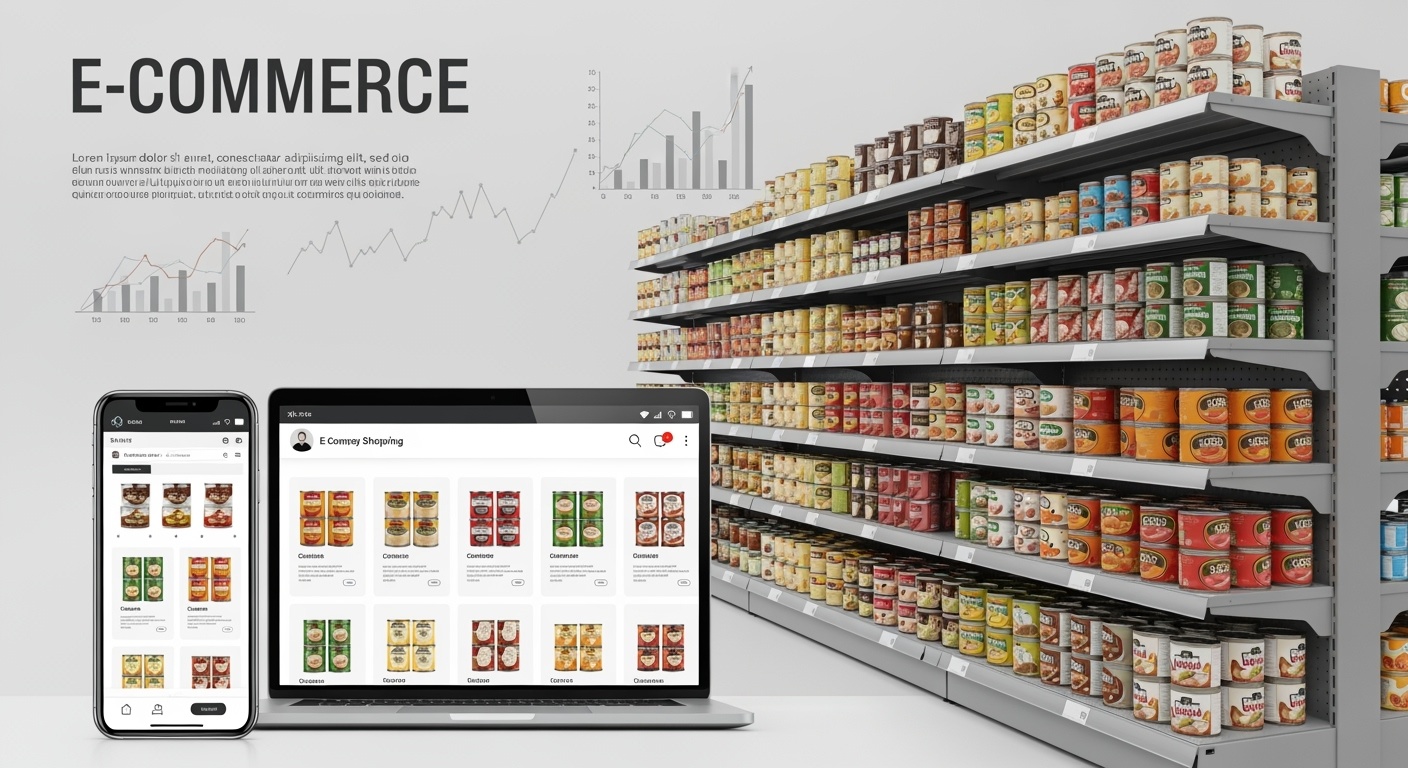Thailand Electronics Market Report: $687M Market Shows Dramatic Shifts in Q1 2025
Revenue Scaler Team
Content Team

Thailand Electronics Market Report: $687M Market Shows Dramatic Shifts in Q1 2025
Exclusive analysis of 684,642 transactions reveals surprising trends in Southeast Asia's hottest e-commerce battleground
Thailand's electronics e-commerce market is experiencing a dramatic transformation that's reshaping competitive dynamics across Southeast Asia. Our comprehensive analysis of $687.2 million in gross merchandise value spanning five quarters from Q1 2024 through Q1 2025 reveals a market in rapid evolution, with surprising winners, unexpected challenges, and emerging opportunities that signal broader shifts in the region's digital commerce landscape.
The data, covering 684,642 individual transactions across Thailand's two dominant platforms—Shopee and Lazada—paints a picture of a market where traditional assumptions about growth, competition, and consumer behavior are being challenged. While total market size has remained substantial, the underlying dynamics show dramatic changes that have significant implications for brands, platforms, and investors operating in Southeast Asian e-commerce.
Perhaps most striking is the explosion in brand diversity, with unique brands increasing from 785 in Q1 2024 to 4,332 in Q1 2025—a staggering 451.8% increase that suggests fundamental changes in market accessibility and competitive dynamics. This brand proliferation coincides with a 41.2% decline in average order values, indicating a market experiencing both democratization and intensifying price competition.
Market Size and Performance: The $150M Peak and Subsequent Decline
Thailand's electronics e-commerce market demonstrated remarkable volatility throughout the analysis period, with quarterly gross merchandise value ranging from a low of $130.0 million in Q1 2025 to a peak of $150.6 million in Q4 2024. This 16.4% quarter-over-quarter surge in Q4 represented the market's strongest performance, driven by holiday shopping patterns and year-end promotional activities.
However, the market's trajectory took a notable turn in Q1 2025, with GMV declining to $130.0 million—a 13.7% drop from the Q4 peak and a 3.2% year-over-year decline compared to Q1 2024. This downturn occurred despite continued strong consumer engagement, with 1.27 million units sold in Q1 2025, suggesting that price competition rather than demand weakness drove the revenue decline.
The quarterly performance patterns reveal distinct seasonal characteristics that have important implications for market participants. Q2 consistently emerged as a strong performance period, reaching $129.3 million in 2024, before the traditional Q4 holiday surge.
Unit sales volumes showed even more dramatic fluctuations, ranging from 1.18 million units in Q3 2024 to peaks of 1.63 million units in both Q1 2024 and Q4 2024. This volatility in unit sales, combined with relatively stable GMV figures, indicates significant shifts in product mix and pricing strategies throughout the analysis period.
The average order value trends tell perhaps the most important story about market evolution. Starting at $823 in Q1 2024, AOV declined consistently throughout the period to reach $102 in Q1 2025. This 41.2% year-over-year decline represents one of the most significant market shifts observed and suggests fundamental changes in competitive dynamics and consumer behavior.
Platform Competition: Shopee vs. Lazada Battle Intensifies
The competition between Shopee and Lazada for dominance in Thailand's electronics market has created one of the most dynamic competitive environments in Southeast Asian e-commerce. Market share fluctuated dramatically throughout the analysis period, with neither platform establishing sustained dominance, indicating intense ongoing competition for merchant partnerships and consumer loyalty.
Shopee demonstrated its strongest competitive position in Q3 2024, capturing 59.8% of total market GMV compared to Lazada's 40.2%. This 19.6 percentage point advantage represented the largest market share gap observed in either direction throughout the analysis period. However, this dominance proved temporary, with market share returning to more balanced levels in subsequent quarters.
Lazada showed its most competitive performance in Q2 2024, achieving 49.4% market share and coming within 1.3 percentage points of parity with Shopee's 50.6%. This near-parity suggests that both platforms have developed effective strategies for capturing electronics sales, with competitive advantages shifting based on promotional activities, merchant partnerships, and platform-specific initiatives.
The Q1 2025 results showed Shopee maintaining a 55.9% to 44.1% advantage over Lazada, representing a more moderate but still significant competitive lead. This market share distribution suggests that while Shopee has established certain advantages in electronics categories, Lazada remains a formidable competitor with substantial market presence.
The competitive dynamics between these platforms have important implications for merchants and brands operating in the Thai market. The frequent shifts in market share indicate that neither platform has achieved sustainable competitive dominance, creating opportunities for merchants to negotiate favorable terms and optimize their platform strategies based on competitive cycles.
Transaction volume distribution between platforms shows interesting patterns that don't always align with GMV market share. The data reveals that platform preferences vary by product category, price point, and merchant type, suggesting that successful market participants need sophisticated platform optimization strategies rather than simple platform selection decisions.
Category Performance: Air Conditioning Dominates, TV Market Evolves
Air conditioning units emerged as the clear category leader throughout the analysis period, generating $171.2 million in total GMV and representing approximately 24.9% of the entire electronics market. This dominance reflects Thailand's tropical climate creating consistent year-round demand for cooling solutions, combined with ongoing urbanization and rising living standards driving air conditioning adoption.
The air conditioning category demonstrated pronounced seasonal patterns that align with Thailand's climate cycles. Peak performance occurred in Q2 2024 at $48.2 million GMV, while Q1 2025 showed $28.9 million, representing a 40% decline from the Q2 peak.
Television sales maintained consistent performance throughout the analysis period, generating $29.5 million to $37.3 million across quarters. The category's strongest performance occurred in Q4 2024, aligning with traditional holiday shopping patterns and year-end promotional activities.
Washing machines represented the third-largest category with performance ranging from $18.8 million in Q2 2024 to $27.6 million in Q4 2024, indicating that washing machine purchases may be more discretionary than air conditioning, with consumers timing purchases around promotional periods and replacement needs.
Refrigerators generated $24.1 million GMV in Q1 2025, with other quarters ranging from $18.5 million to $23.4 million. This stability suggests that refrigerator purchases are driven primarily by replacement cycles and household formation rather than seasonal factors.
The smaller appliance categories—hair dryers, rice cookers, water heaters, blenders, and microwaves—collectively represented significant market opportunity, generating $35.7 million total GMV, with notable strength in Q4 2024 suggesting gift-giving and personal care focus during holiday periods.
Brand Competition: TCL Dominates, But Market Fragments
TCL emerged as the undisputed market leader throughout the analysis period, generating $118.2 million in total GMV and capturing 17.2% market share. This leadership position reflects successful market penetration across multiple product categories, particularly air conditioning and televisions, combined with competitive pricing strategies and strong local distribution partnerships.
Samsung secured second position with $71.6 million total GMV, representing 10.4% market share and demonstrating strength across premium product segments. The brand's performance indicates successful maintenance of brand prestige positioning while competing effectively in Thailand's price-sensitive market environment.
LG followed closely with $68.0 million total GMV and 9.9% market share, competing effectively across appliance and consumer electronics categories. The brand's consistent performance across quarters suggests strong brand loyalty and effective product positioning in the Thai market.
Hisense achieved impressive performance with $54.4 million total GMV, representing 7.9% market share through aggressive pricing and feature positioning. The brand's success indicates growing consumer acceptance of Chinese electronics brands in the Thai market and effective competition against established international brands.
Toshiba maintained $50.1 million total GMV and 7.3% market share, leveraging established brand recognition and product reliability reputation. The brand's performance demonstrates that traditional brand strength continues to provide competitive advantages in the Thai electronics market.
The dramatic increase in brand diversity from 785 unique brands in Q1 2024 to 4,332 brands in Q1 2025 represents one of the most significant market developments observed. This 451.8% increase indicates that e-commerce platforms have successfully lowered barriers to market entry, enabling many new brands to establish market presence and compete for consumer attention.
However, despite this brand proliferation, market concentration among top brands remained significant. The top 10 brands captured approximately 60% of total market GMV, indicating that while new brands can enter the market, established brands with strong distribution networks, brand recognition, and product quality continue to maintain competitive advantages.
Merchant Dynamics: Regular Sellers Dominate, Official Stores Command Premium
The merchant landscape in Thailand's electronics market reveals interesting dynamics between different seller types and their respective market positioning strategies. Regular sellers consistently represented 95-96% of all transactions across quarters, indicating that the market operates primarily through independent merchants rather than brand-direct sales channels.
Official stores, while representing only 4-5% of total transactions, appear to capture disproportionate value through premium positioning and enhanced consumer trust. This distribution suggests that e-commerce platforms serve primarily as marketplaces enabling third-party sellers rather than direct retail channels, while official brand presence provides important authenticity and warranty assurance for consumers.
The geographic distribution of merchants shows concentration patterns that reflect Thailand's commercial infrastructure and logistics networks. Samut Prakan emerged as a significant hub for electronics merchants, particularly for major brands like TCL that established official stores in this location. This concentration provides advantages in terms of shipping efficiency, inventory management, and customer service capabilities.
Bangkok and surrounding metropolitan areas demonstrated high merchant concentration, reflecting the capital region's role as Thailand's primary commercial and logistics center. However, the data also indicates that electronics e-commerce has enabled merchants outside major metropolitan areas to access national markets, though concentration in key commercial centers remains significant.
The coexistence of official stores and regular sellers creates a complex competitive environment where brand authorization, pricing flexibility, and service quality all influence consumer choice. This diversity benefits consumers through increased competition and choice while providing brands with multiple channel options for market access.
Year-over-Year Analysis: Mixed Signals for Market Health
The comparison between Q1 2024 and Q1 2025 reveals complex market evolution patterns that indicate both challenges and opportunities within Thailand's electronics e-commerce market. While some metrics showed decline, others demonstrated significant positive development, suggesting a market in transition rather than simple contraction.
Total GMV declined by 3.2% from $134.4 million in Q1 2024 to $130.0 million in Q1 2025, representing a modest decrease that could reflect various factors including increased price competition, economic conditions, or market maturation. This decline, while notable, remains within normal market fluctuation ranges and doesn't necessarily indicate fundamental market weakness.
The 22.0% decline in total quantity sold from 1.63 million units to 1.27 million units represents a more significant change, suggesting shifts in consumer purchasing patterns, product mix evolution, or market dynamics. This volume decline combined with modest GMV decline indicates that average selling prices increased for products that were sold, though overall average order values declined due to mix shifts.
The most dramatic change observed was the 451.8% increase in unique brands from 785 to 4,332, representing fundamental market democratization and increased competition. This brand proliferation indicates that e-commerce platforms have successfully lowered barriers to market entry, enabling many new brands to establish market presence and compete for consumer attention.
The average order value decline of 41.2% from $823 in Q1 2024 to $102 in Q1 2025 represents the most significant metric change observed. This decline could reflect several factors: increased price competition driving down margins, shifts toward lower-priced product categories, or changes in consumer purchasing behavior favoring smaller, more frequent purchases.
Market Outlook: Transformation Continues
Thailand's electronics e-commerce market appears to be experiencing fundamental transformation rather than simple growth or decline. The dramatic increase in brand diversity, combined with declining average order values and intensifying platform competition, suggests a market evolving toward greater efficiency and consumer choice.
The seasonal patterns observed throughout the analysis period are likely to continue, with Q2 representing peak opportunity for air conditioning sales and Q4 providing optimal timing for television and holiday-related electronics purchases. Understanding and optimizing for these patterns will remain crucial for market participants seeking to maximize revenue capture.
Platform competition between Shopee and Lazada shows no signs of diminishing, with market share continuing to fluctuate based on competitive strategies, promotional activities, and merchant partnerships. This ongoing competition benefits merchants through improved terms and services while requiring sophisticated platform optimization strategies.
The brand proliferation trend indicates that market accessibility will continue to increase, creating opportunities for innovative products and emerging brands while challenging established players to maintain differentiation and market share. Success in this environment will increasingly depend on effective brand positioning, customer service excellence, and operational efficiency rather than simple market presence.
This analysis is based on comprehensive transaction data from Thailand's electronics e-commerce market spanning Q1 2024 through Q1 2025, covering $687.2 million in gross merchandise value across 684,642 transactions on Shopee and Lazada platforms. Talk with Revenue Scaler to learn more about Southeast Asia ecommerce.
Similar Insights
Explore more insights related to Market Intelligence

Indonesia Beauty E-Commerce Insight — July 2025 Market Data
Indonesia’s beauty category generated US $152.2 million GMV across major e-commerce platforms in July 2025 , up 17.8% month-on-month. Total quantity sold reached 53.1 million units (+34.4%), while 436.9 thousand SKUs recorded at least one sale (+15.9%), showing a healthy and expanding product turnover across platforms.

Lazada Dominates Philippines Canned Food Ecommerce Market - April 2025 Insight
The Philippines canned food ecommerce market demonstrated robust performance in April 2025, with total gross merchandise value (GMV) reaching ₱80.8 million across major digital platforms. This comprehensive analysis reveals significant market dynamics, platform preferences, and brand positioning in the rapidly evolving Filipino digital commerce landscape.

Indonesia's E-commerce Coffee Market in February 2025: Kapal Api Maintains Dominance Amid Market Consolidation
Indonesia's e-commerce coffee market showed signs of consolidation in February 2025, with total sales reaching IDR 74.64 billion across major digital platforms. The market landscape reveals continued dominance by established players while highlighting platform-specific competitive dynamics and evolving consumer preferences.